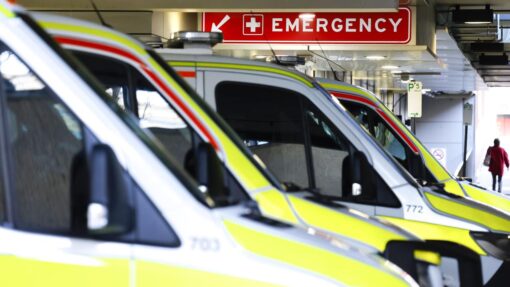Australia’s road toll is rising, missing safety targets
Jennifer Dudley-Nicholson |
Australia’s road toll is rising, with an additional 67 people killed on the country’s roads over the last year despite a goal to halve road fatalities by 2030, figures show.
An analysis from the Australian Automobile Association also showed Australia had missed its road safety target by almost 20 per cent in the year to March, with all but one state or territory failing to reduce road deaths.
The statistics, released on National Road Safety Week, come less than a week after more funds were committed to road safety measures in the federal budget and months after the release of the latest National Road Safety Action Plan.
Australia recorded 1204 deaths on the roads between April 1 2022 and March 31 2023 – 5.9 per cent more than the year before.
But the AAA, which represents state-based groups including the NRMA, RACQ and RACV, found 193 lives could have been saved if the country had been on target to reach its goal of halving road deaths by 2030.
Only the Northern Territory reduced its road toll, with six fewer fatalities recorded in the past year, the association found, while NSW recorded the same number of deaths on its roads as last year at 289.
The biggest road toll increases were seen in the ACT (70 per cent), Western Australia (16.9 per cent), Victoria (9.7 per cent) and South Australia (9.4 per cent).
The analysis also found NSW was the only state on track to meet its 2030 road toll target on a pro-rata basis.
But Australian Automobile Association managing director Michael Bradley said the challenge of reducing road accidents was being made difficult by the lack of information about them, including their location and information about serious injuries.
“Road deaths have increased over the past five years and a lack of road trauma data reporting makes it difficult to understand the reasons for this trend and to identify the measures needed to prevent them,” he said.
“The families of victims deserve to know governments are learning from each crash and taking steps to prevent others suffering the same fate.”
Mr Bradley said Australian motorists deserved “an evidence-based response” to the growing road toll and funding that targeted accident hotspots.
The latest National Road Safety Action Plan, released in February, listed the creation of a central road accident data hub as a priority, which would collect details of the time, location, and contributing factors in fatal and traumatic accidents. No deadline was listed for the project.
In 2021 the federal government committed to halving road deaths in the decade to 2030 and reducing road injuries by 30 per cent.
It is also a signatory to Vision Zero, a global project with a goal to eliminate road deaths by 2050.
The latest federal budget included $110 million annually for its Black Spot Program and $976 million for its Road Safety Program.
AAP


